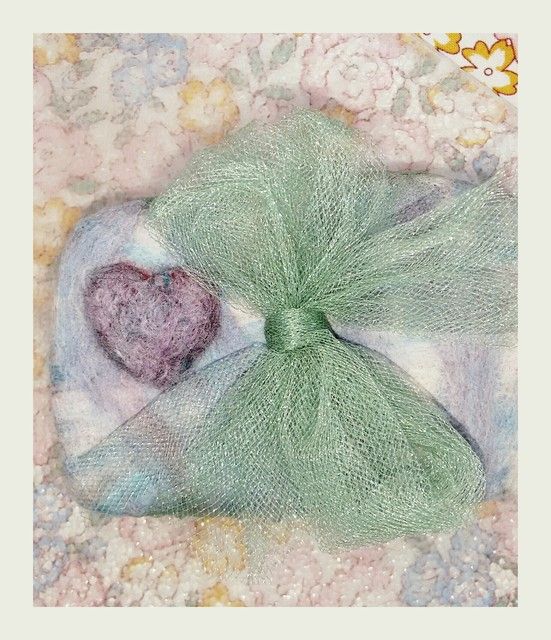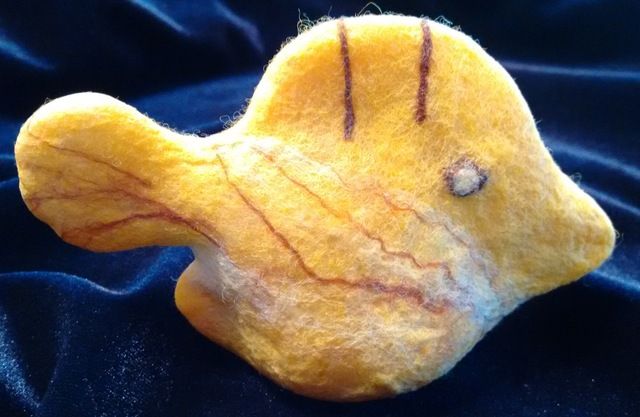Newbie, dryer balls are felted wool balls like tennis balls, that go into the dryer with wet laundry. It helps prevent wrinkling and are used instead of fabric softener.
Vickyms, your felting skills sound awesome! My SIL taught me to felt a couple of years ago. She took a couple of classes and made gloves, slippers, purses, and a variety of other things, including some nino felted items. I brought the soap; she brought the roving, netting, and some felting needles and we met up at Spring Training (in Arizona), where we dyed the roving, then felted a couple of dozen bars of soap. Later that trip, I taught my granddaughter to felt soap and together we made several bars she gave as gifts to her teachers and counselors at her school. She is quite the artist, so she had loads of fun customizing the designs on the felted soap. Since I had not brought enough soap with me, we actually went out and bought store-bought soap for some of her gift bars.
I have seen some gorgeous felted garments at several shops in the past couple of years, because now I am so interested in the medium. But I doubt I'll ever get as skilled as you are. If you care to share, I'd absolutely love to see some photos of your felting projects. There is a section for posting photos
The Photo Gallery, as well as section for
Other Crafts & DIY Projects. Either would be appropriate, I think. We Love, Love, Love photos of each other's artistic endeavors!
Here's one of my first felted soaps, just because I loved doing it and love the photo.
I had not taken my own advice about using my own product (felted soap) before gifting to others. At least I do know the soap I used for those first soaps where well cured and remained hard thoughout the life of the felted bar, because they were from the same batch as the one I mentioned before that is still hard/firm after several months of usage (occasional use). So I lucked out on that score. Since then I learned that not all soap will perform so well inside of felting.
My avatar is also a felted soap. I made the mold using silicone, then made the soap, then felted the soap. I've actually never used that soap and it hasn't been wet since I did the felting. But it was so much fun doing everything, including dying the roving!
Here's a better look at my Felted Fish soap.
Welcome to the forum, and please forgive me for hi-jacking your thread. I just love felting soap and would love to see some photos of yours and some of your other projects.

















































